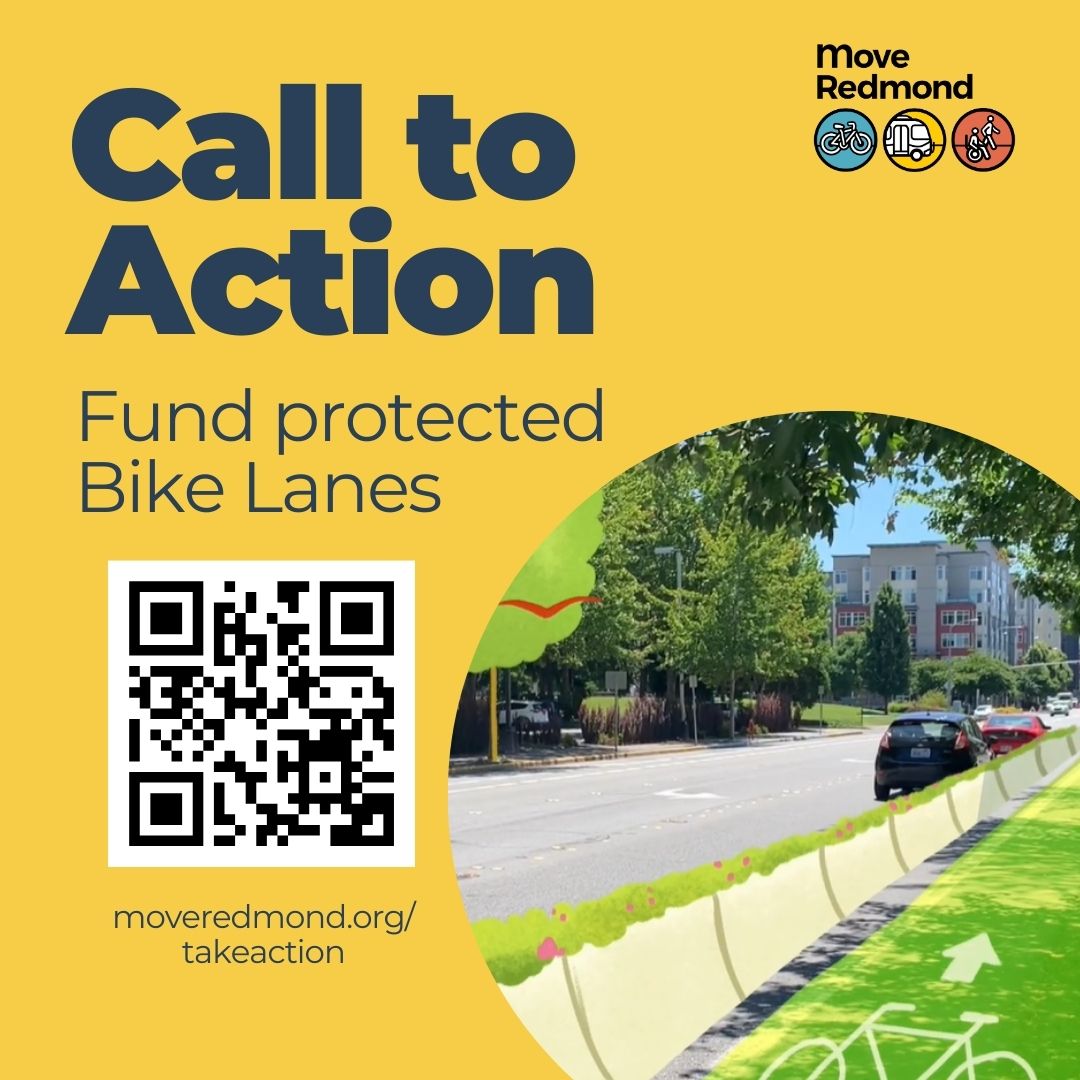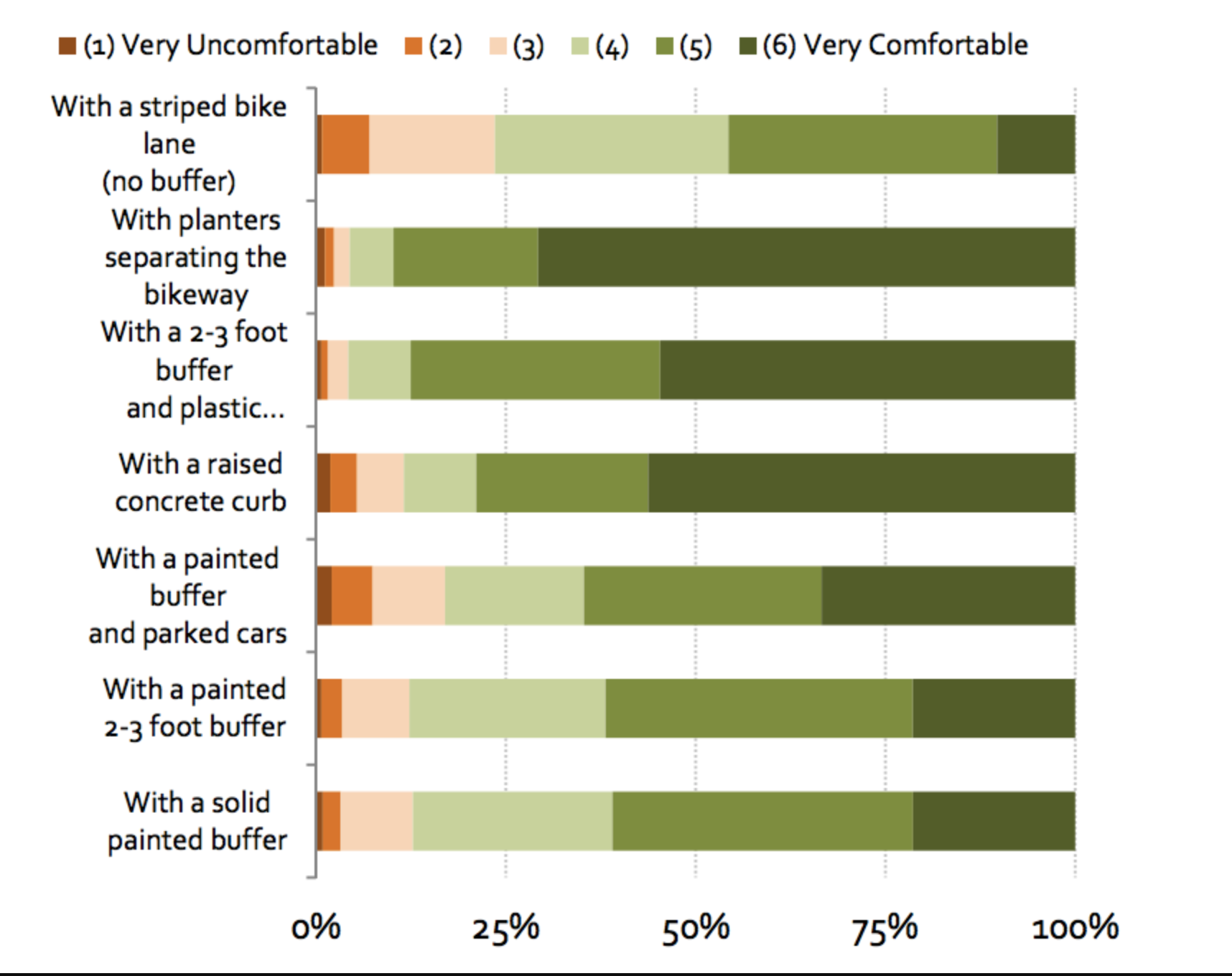Buffered Bike Lanes Are Good, But Protected Ones Are Better
By Kelli Refer
On Tuesday, October 15th the City of Redmond will hold public hearings for its Transportation Improvement Program (TIP) and for the 2025-2026 budget. The TIP shows how the city is prioritizing transportation projects, and the 2025-2026 budget determines how much funding the city will allocate to projects that will be worked on in the next two years.
At Move Redmond we were thrilled to see that the recently-updated TIP has a forward-thinking project list. It is clear City of Redmond leadership values safety for non-drivers and believes in providing mobility options for our community. It also shows how the city is leveraging the investment of light rail to enhance access to transit, connecting bike networks, and funding sidewalk and ADA improvements across the city. Redmond is a clear leader on the Eastside in supporting and investing in a more sustainable and connected community.
However, there is one small addition that the city could make in the 2025-2026 budget that would have a huge return on investment.
Redmond’s extensive trail network is popular because it provides safe, low-stress, and separated routes for its users. We urge the city council to fund the design, installation, and maintenance of physical barriers for all of the proposed buffered bike lanes in the TIP. With this investment Redmond has the opportunity to extend that trail-like experience to its streets, offering more protection than paint alone provides.
Take action today and urge Redmond’s elected leaders to allocate additional funding to install physical barriers to the following buffered bike lane projects:
- Bel-Red Road
- Avondale Road
- Old Redmond Road
- Red-Wood Road
Studies show that investing in connected and protected bike routes encourages more people to choose to ride bicycles for transportation. In fact, The National Institute for Transportation and Communities found that installing protected bike lanes significantly increases ridership, more so than buffered bike lanes alone. These arterials are critical for connecting people to key destinations across the city. Building out a low-stress bike network on these streets will transform how people move through Redmond.
In fact, protected bike lanes increase street safety for all users, including people driving cars. Adding protection to our buffered bike lanes also supports the City’s Vision Zero Resolution. A comprehensive 2019 study found that bicycling infrastructure was significantly associated with fewer fatalities and better road-safety outcomes for drivers and non-drivers alike.
Act now to ensure that our new buffered bike lanes work for people of all ages and abilities by funding physical separation during this budget cycle.
Redmond is on the right path towards a safer, more sustainable transportation system. Let’s keep that momentum going by ensuring every new bike lane is safe and inviting to new riders. Take action today.


